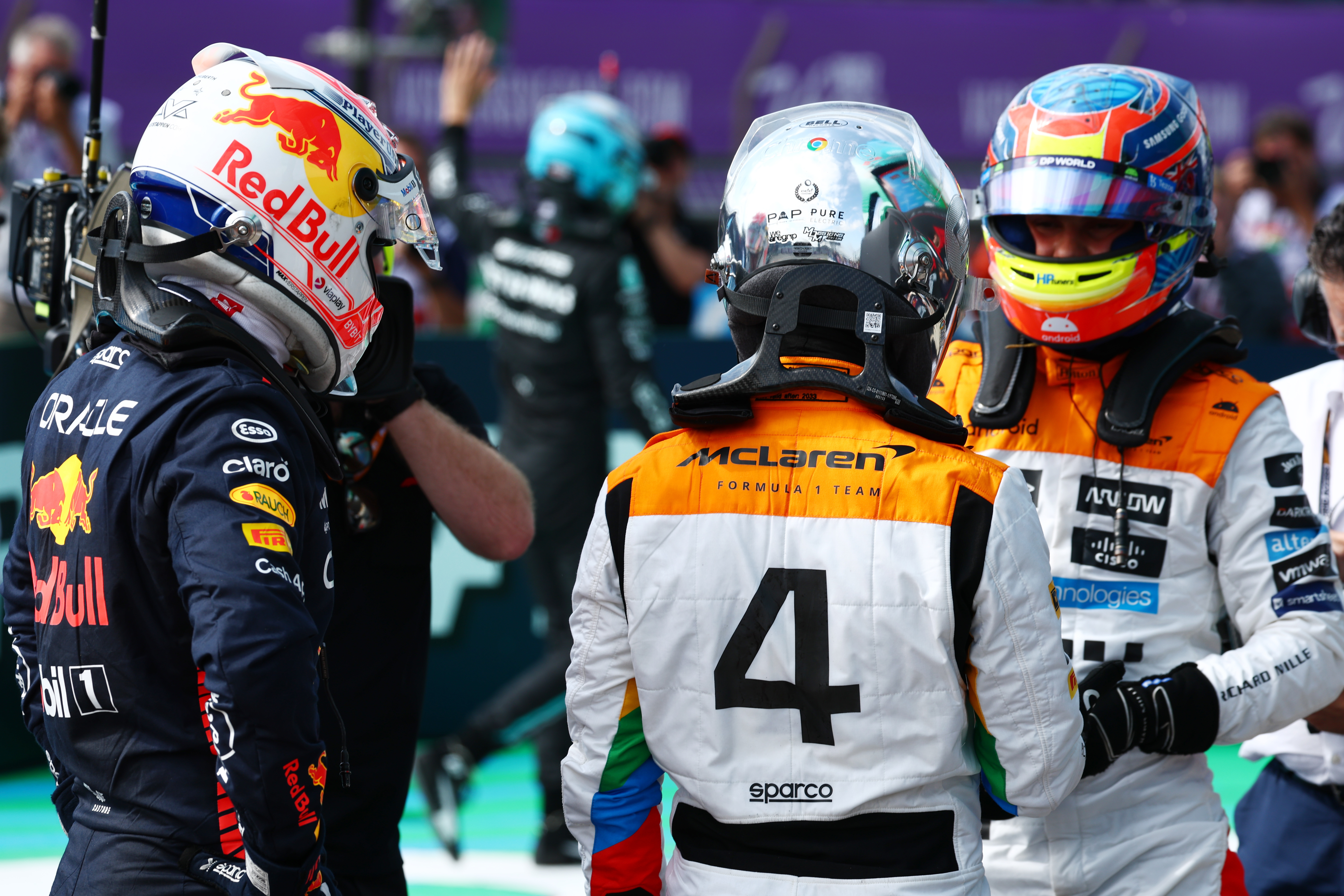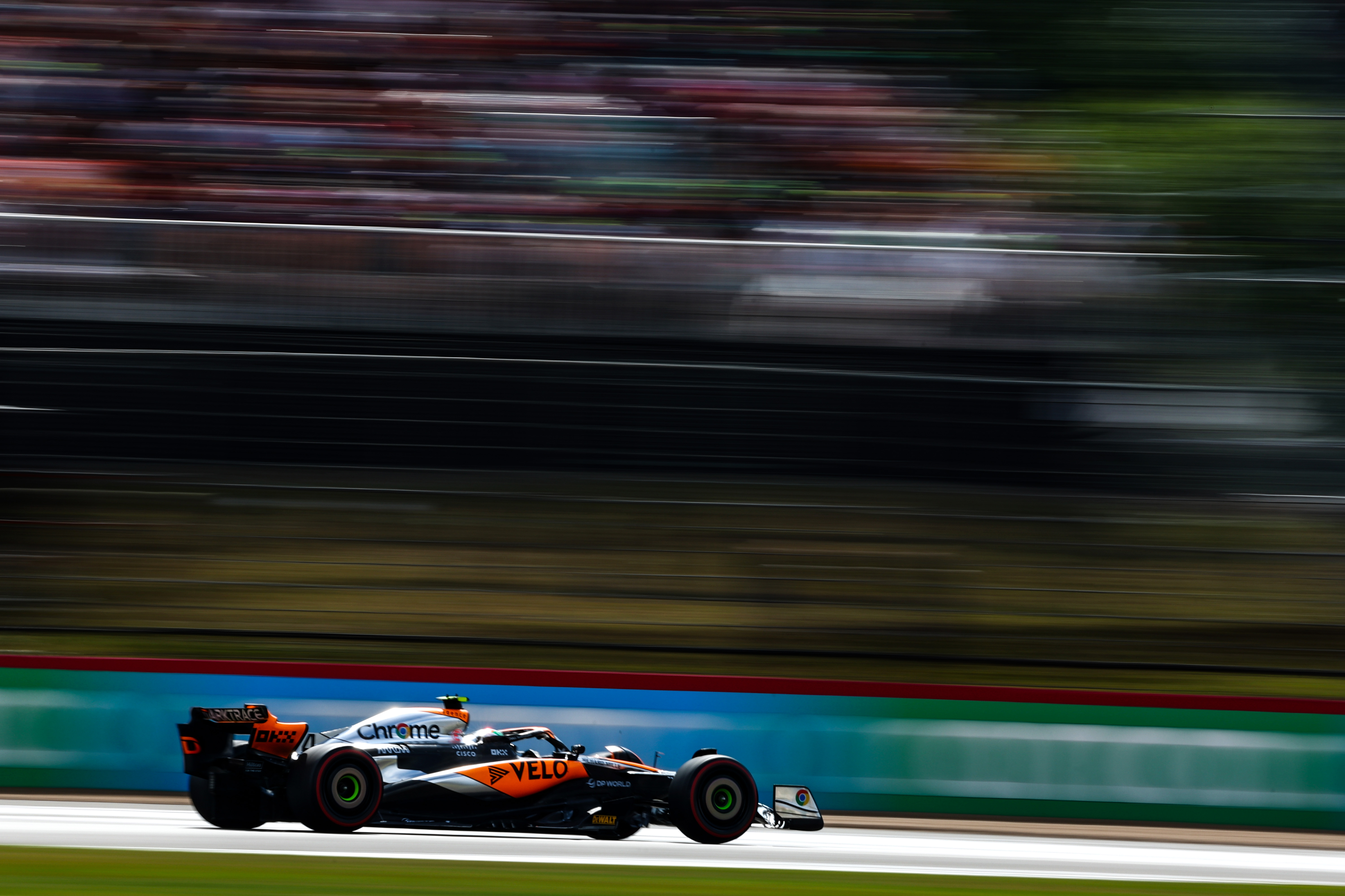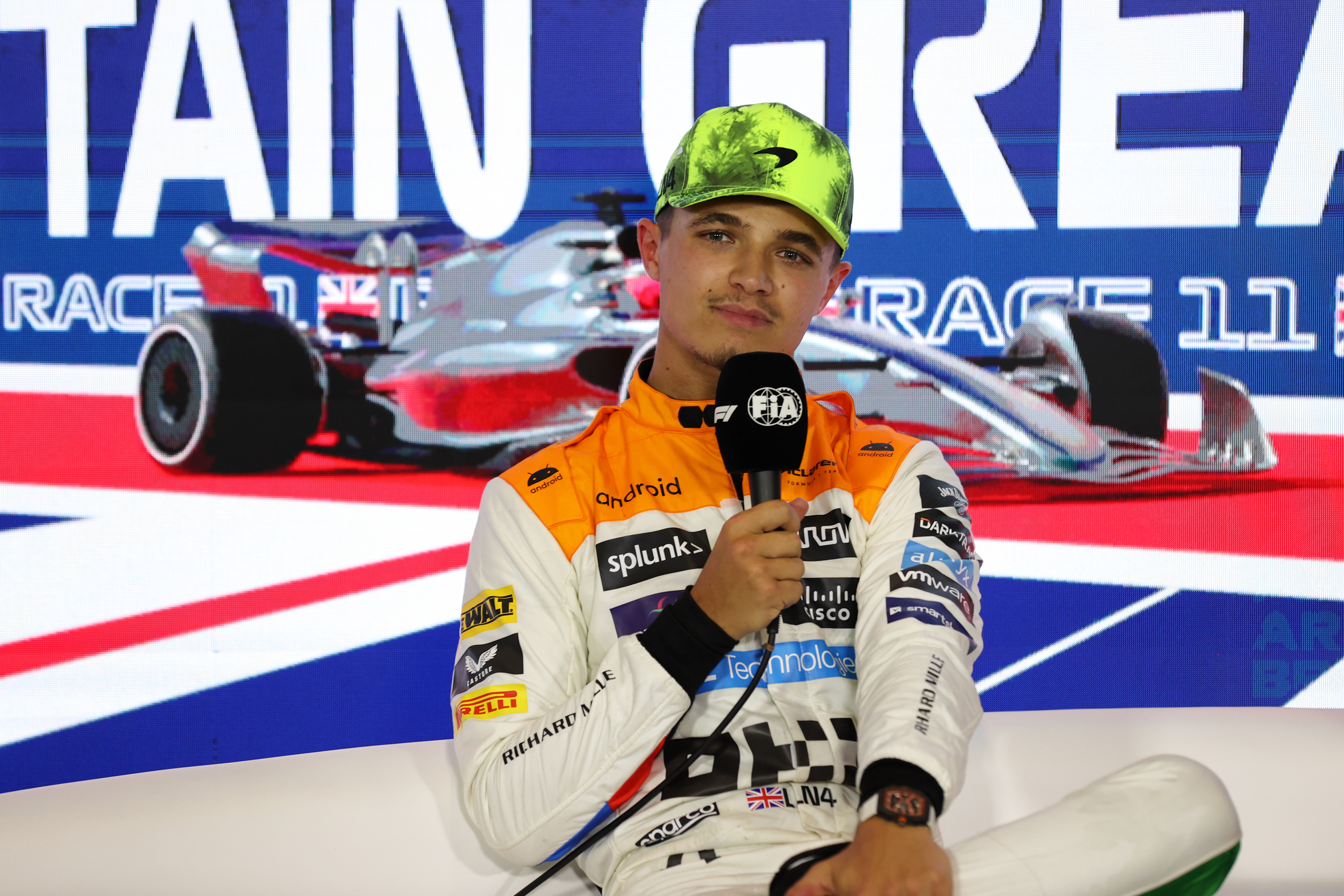Up Next

McLaren duo Lando Norris and Oscar Piastri have warned after their spectacular British GP qualifying that fundamental limitations to the MCL60 Formula 1 car remain, with Norris saying they were still “70%” unresolved.
Norris qualified second – and was briefly even on provisional pole before a late Max Verstappen improvement – while team-mate Piastri was just a tenth further back in third.

It represented another, particularly strong bit of evidence that the upgrades to the MCL60 – which had started the season in awful shape – are paying off big-time, with Norris having run a great race to fourth after receiving new parts in Austria and with Piastri using them here to such good effect, after having toiled badly with the older-spec McLaren at the Red Bull Ring last weekend.
Both drivers were clear that this was a great result for McLaren, that the progress was “very, very evident” and that the staff back at McLaren’s Woking base deserved enormous credit not just for the quality of the upgrades but for the fact their arrival had been pushed forward.
But both cautioned that, while the new parts on the MCL60 were an ingestion of much-needed downforce and efficiency, the balance characteristics remained a baked-in limitation that offered big scope for improvement.
“I don’t want to look forward to the bad races, [but] there’s going to be a couple because there’s definitely tracks that we know we’re going to struggle more at,” said Norris.
“These have been tracks where our strengths have really come through. We’ve made the car probably a little more efficient at times, but high-speed [cornering] is one of our strengths and we have quite a bit of that here.
“We’ve obviously improved the car – not the overall balance but the overall speed, and performance has just taken a decent step forward.
“If I was going to be negative there’s definitely going be some tracks that we’re going to struggle more at. Our weaknesses are still the same – and quite weak – so I think we really need to try and tackle them if we want to be able to be here more consistently.”
“Very similar comments,” Piastri agreed. “The car is clearly a good step forward.

“With that in mind, we saw in Barcelona in similar conditions with the old-spec car that we could also challenge for the front [over a single lap].
“Again, I don’t want to be negative, but I feel like there’s a little bit in that, but I think genuinely we are more consistently further up the front now.
“As Lando said, the car doesn’t feel too much different, I still think we have some weaknesses we want to address. But overall it’s faster.
“And if I was to choose a car that feels great or a car that goes fast, I would choose one that goes fast and worry about the handling later.”

The peculiarities of what the recent generation of McLarens are like to drive, spanning back at least all the way to when Norris was brought in for 2019, have been often-remarked upon, and not just by Norris.
It was seen as part of the reason why Daniel Ricciardo’s McLaren stint fizzled out in such dispiriting fashion, with a lingering front-end weakness leaving him unable to rotate the car sufficiently through the lower-speed long corners.
This was evidenced, for instance, in the fact that the high-speed-dominated Silverstone was the stage of one of Ricciardo’s better qualifying performances relative to Norris in 2021 – although he then did get trounced in 2022.
It is, therefore, only part of the puzzle, with the other part being something Norris has repeatedly brought up – that the car is inconsistent in terms of the technique it requires on corner entry where the application of brake and steering is concerned, something that was a particular annoyance for him in 2022 and didn’t seem to have improved much at the start of the year.
“For one corner, you’ll have to do it this way and literally the next corner, it goes the opposite way and you have to do something different, just because it’s a little bit tighter or it’s a little bit more open, or the wind’s a little bit different,” Norris said in an interview with The Race earlier this year.
“Every single corner, you need to learn how to drive the car.”
And he was not overly content with how the car felt to drive in Austria, even as he managed to keep pace with the Ferrari of Carlos Sainz up ahead.
Asked by The Race after British GP qualifying how much if any improvement there was in the aforementioned weaknesses inherent to the MCL60, Norris said: “It’s like 70-30. 70% not fixed, 30% fixed just by making the car quicker, adding load and having a better performance.
“I think 70% at the minute is – if we just add more load, it will be covered but it’s not the whole solution.

“I think days like today prove that we’re not miles away on certain things. It’s just certain characteristics and handling that I would still say we’ve had as an inherent issue over the last five years, that we definitely still struggle with.
“There’s still very good things that we’ve been able to carry through, such as high-speed performance, I think since I joined in 2019 we’ve always been good at certain tracks, like this and Austria.
“There’s plenty of things to work on, and I think if we really can tackle those bigger problems, which are more fundamental and not just by adding load, then I’m confident we can have a much more competitive car from race one to race 24 next year or race 23 this year.
“Plenty of good things, but there are still some issues – that we know of and are trying to tackle, but it’s complicated and it takes time, but everyone is working extremely hard, and if we can make progress like we’ve made over the last few races with those certain things over the next five-six months and into ’24, then I’m confident we can be a lot more competitive and fighting for some podiums and wins at some point.”





